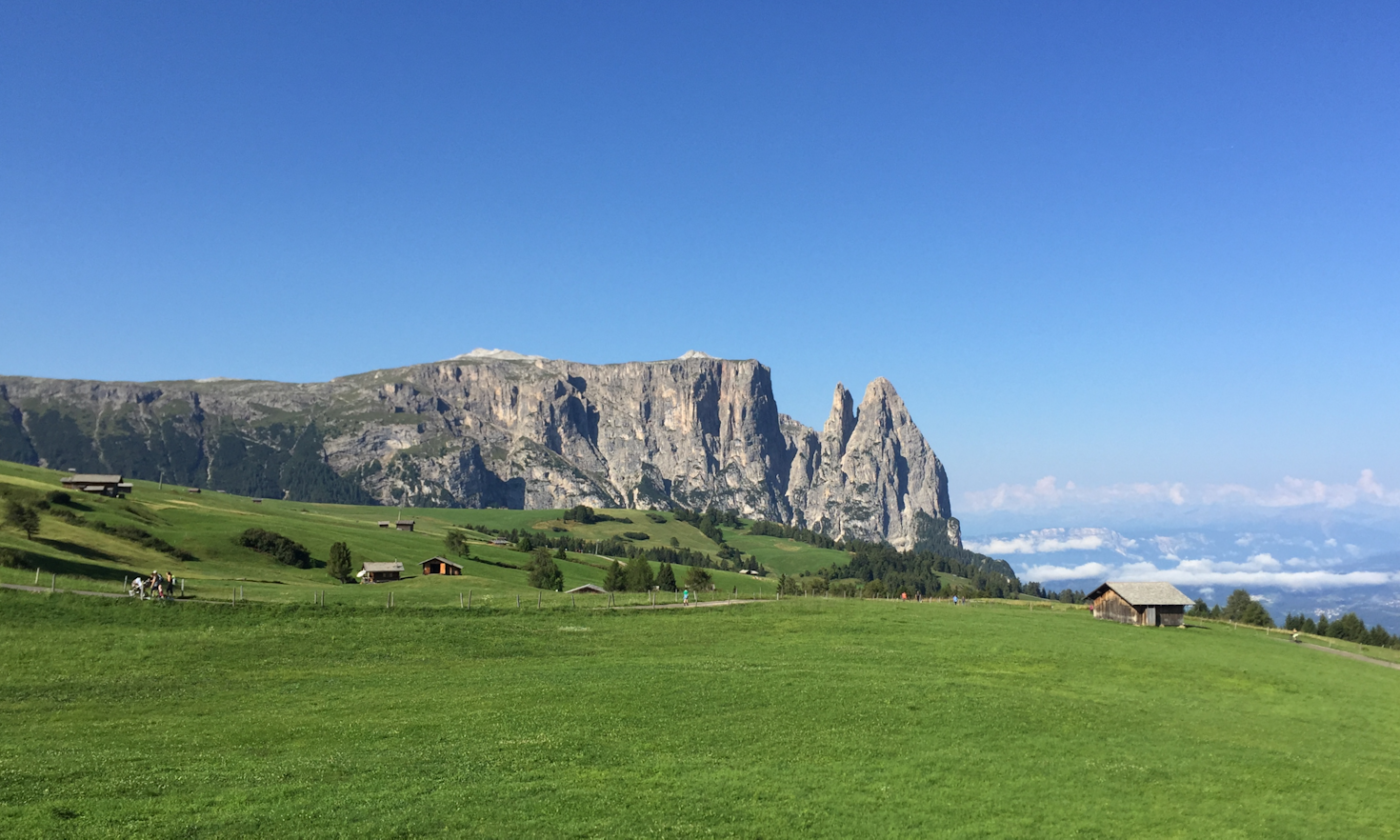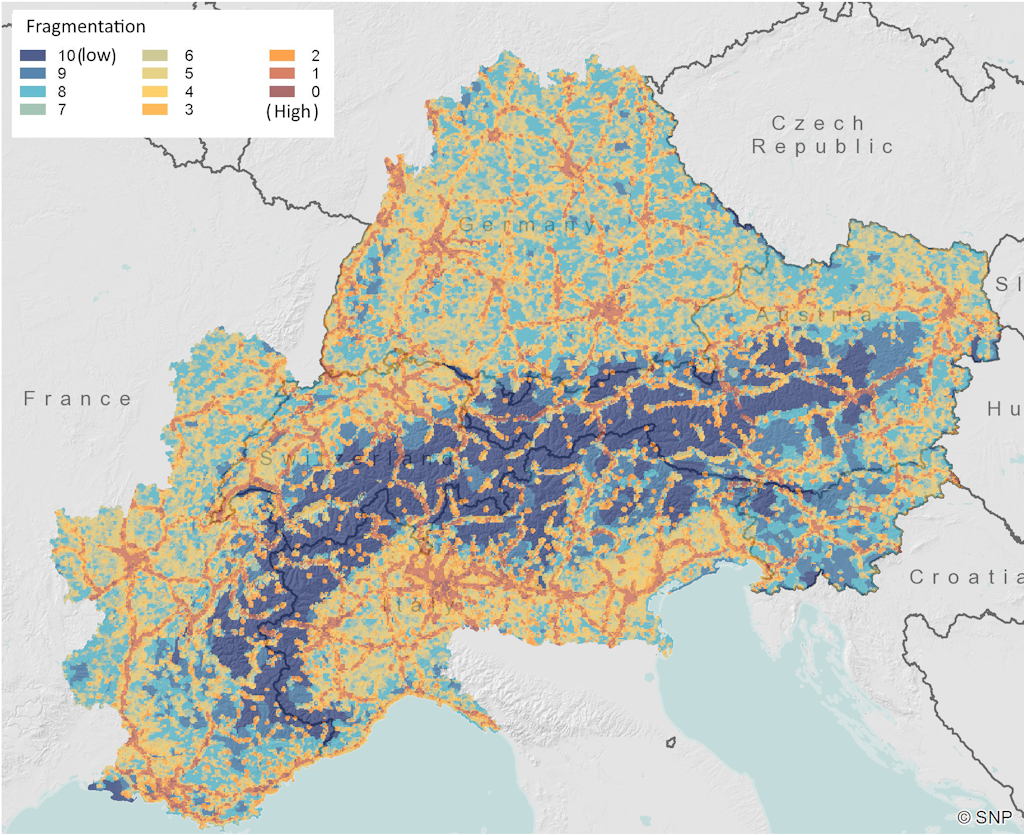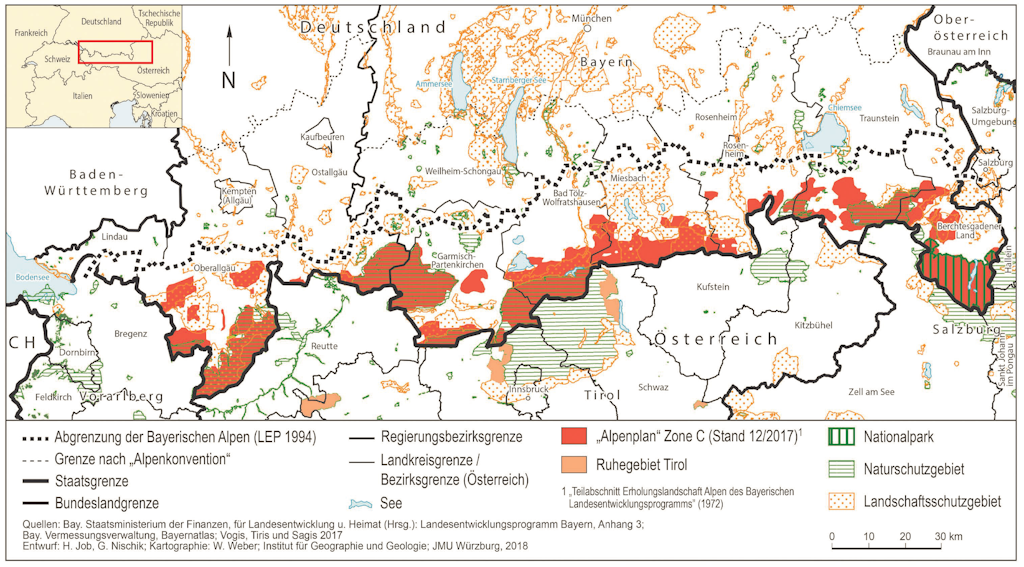The need of Open Spaces in the Alps: a transnational planning issue.

Near-natural open spaces are filled with resources and important functions, which sustain human life. They are important for the ecosystem and nature protection, they have economic functions for agriculture and forestry, as well as social functions, such as areas for recreation or water retention areas to reduce flood risk.
These near-natural open spaces are decreasing in the Alps due to raising human impact and landscape fragmentation through disturbing infrastructure. Even open spaces at higher altitudes are being broken up and exploited by technical infrastructure like cable cars or by the increase in the use of new technical equipment like e- bikes.

Spatial planning has a fundamental role in the safeguarding of open spaces: it provides an agreed definition and approaches at local, regional and transnational level. In this way, it will be possible to consider and protect them as ecosystem services by planning instruments and therefore ensure their benefits from a social, economic, and ecological point of view.
Transnational planning
The competence regarding spatial planning mostly lies at the regional level; some countries, such as Austria and Italy, do not have a specific national law, while in Germany and France a national law defines only the framework for spatial planning. Spatial planning at national level is mostly related to important infrastructures such as for linear transport or energy provision and only in few cases it integrates additional planning topics. This means, that every federal state in Austria and Germany (Bundesländer), every Regione or Autonomous Province in Italy and every Region in France makes its own spatial planning laws and elaborates its own plans, without consulting strongly neighbouring regions or transnational regions. An exception among the Alpine countries is Slovenia, which has a national wide Spatial Development Strategy. This strategy establishes objectives for the spatial development of Slovenia, among which nature conservation and the development of natural and cultural landscape is included. It defines e.g. areas of natural landscape, natural qualities, protected forests, priority areas for agriculture and areas to keep free for flooding at a national level.
A common European strategy for spatial development was introduced in 1999 (European Commission 1999), but it never was actually applied and revised until it became outdated nowadays. On an Alpine level, the Alpine macro-region EUSALP became more important in recent years and a project for a common spatial perspective ESPON Alps 2050 within this macro – region was elaborated (ESPON Alps 2050). However, since it was a research project dealing with a vast area, it did not aim to implement recommendations for specific topics like opens spaces, producing therefore a very general vision. The current most important transnational agreement for the safeguard of open spaces remains the Alpine Convention, which brought up protocols for joining spatial planning and sustainable development, proposing to delimit open spaces like tranquil areas “in which construction of buildings and infrastructures is restrained or prohibited, as are other damaging activities”.
Planning and planning gaps for open spaces
Although the Alpine Convention is speaking about tranquil areas, they are not implemented in each of the eight Alpine countries. Planning gaps can still be found in other land uses like the implementation of priority areas for agriculture, the protection of unique landscape in France, the plans for the coordinated development of tourism infrastructure in Italy, and in the coordination for landscape planning between municipalities in Italy, Germany and Austria.
Transnational planning for open spaces is still missing at Alpine level and the developments and protection status are not harmonised across national borders. The following map helps to understand the problem: it shows the border between Austria and Germany and the protected areas which will be kept free from buildings and disturbing infrastructure on the German side. The map highlights that on the Austrian side there is not a harmonisation for keeping the same areas free from buildings and new infrastructures.

An online workshop in May 2020 with institutions for environmental protection and nature parks, environmental consultants, and researchers from Germany, Slovenia, Austria, and Italy brought up challenges and institutional barriers in spatial planning practice. As an overall problem it was mentioned the lacking knowledge about the concept of safeguarding open spaces as a whole. The Alpine Plan (germ. Alpenplan) in Germany is one of the rare examples which applies a general protection status for open spaces and could be applied in other countries too. Planning systems, especially in Italy and Slovenia are nowadays mostly safeguarding several functions of open spaces, which refer to specific sectors, while an overall protection status for open spaces is missing. The implementation of such a protection status depends also on capacities for coordination between planning institutions of different sectors and the establishment of transnational institutions.
For the above-mentioned reasons, a group of Alpine public and private bodies and institutions (including the Institute for Regional Development of Eurac Research) is working to develop a common approach to identify Alpine Open Spaces and to harmonise spatial planning laws across the Alpine arc, as part of a European trans-regional Alpine Space cooperation project (OpenSpaceAlps). A common definition of Open Space is important to develop a common implementation in spatial and landscape planning instruments and tools, to prevent the ongoing fragmentation of Alpine open spaces. This will help to maintain the ecological, economic and social functions from which people and the wildlife can benefit.
Authors: Peter Laner, Andrea Omizzolo, Filippo Favilli
Citation
This content is licensed under a Creative Commons Attribution 4.0 International license except for third-party materials or where otherwise noted.





